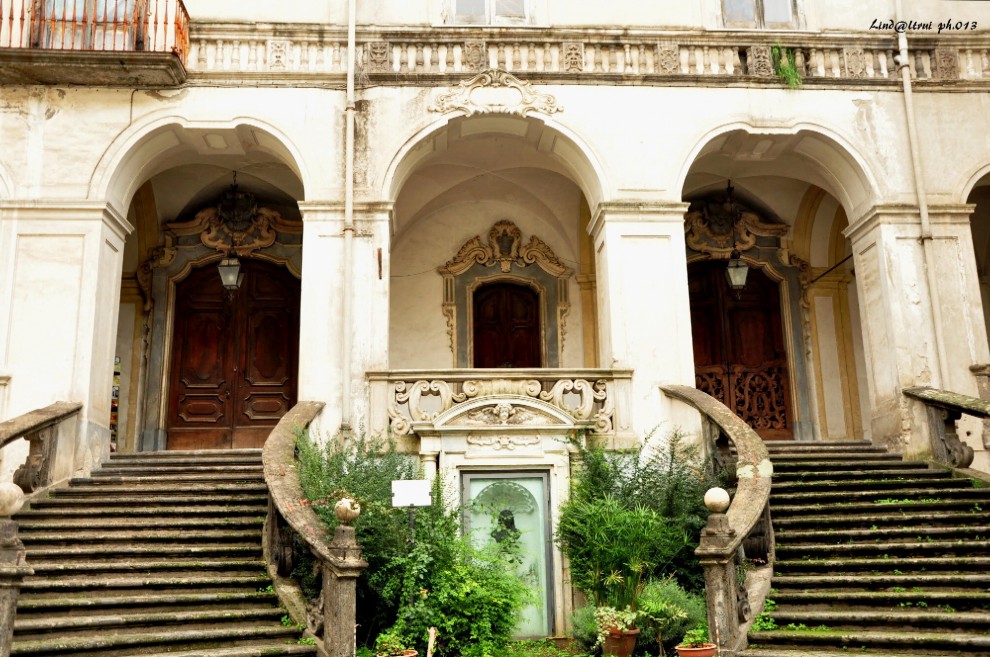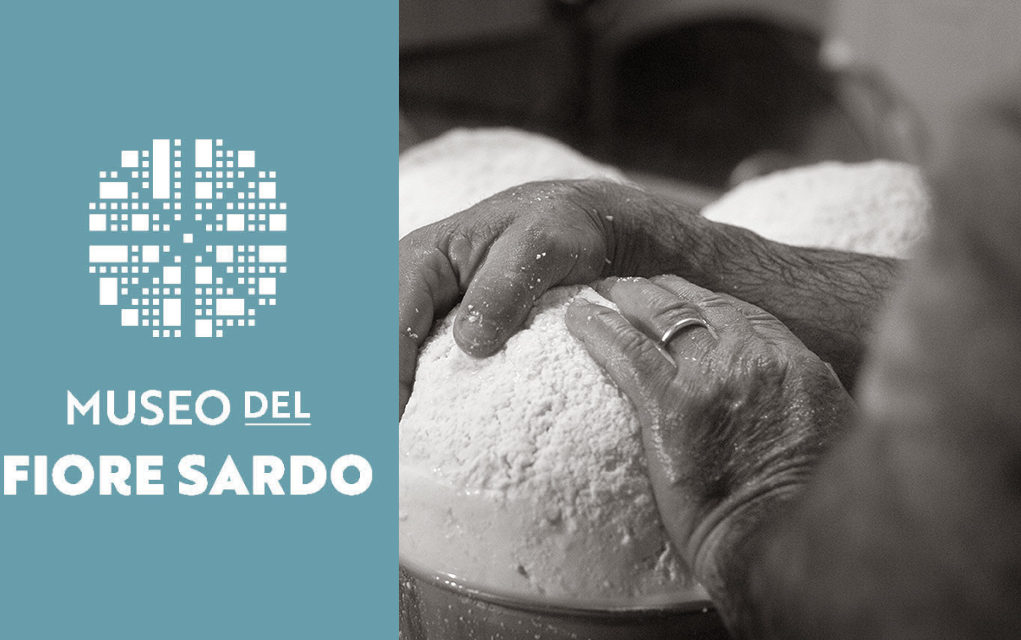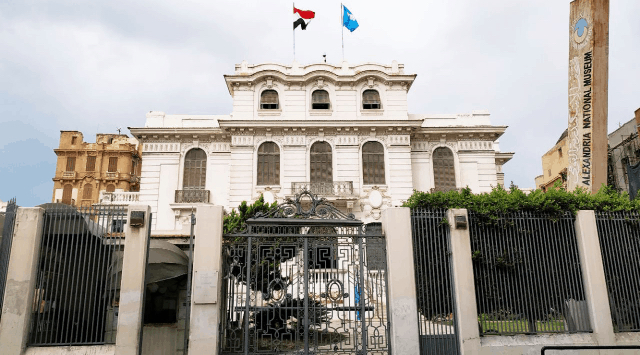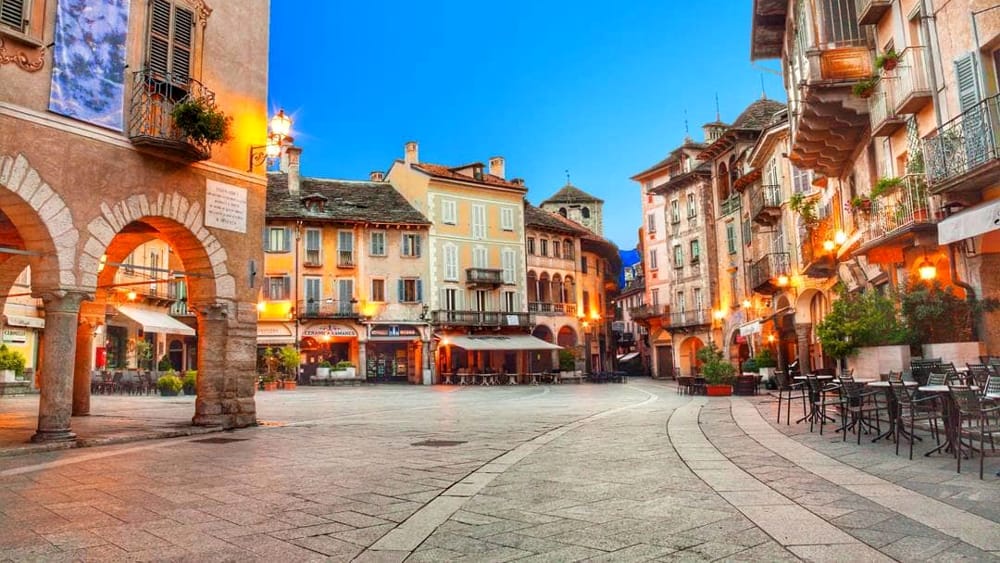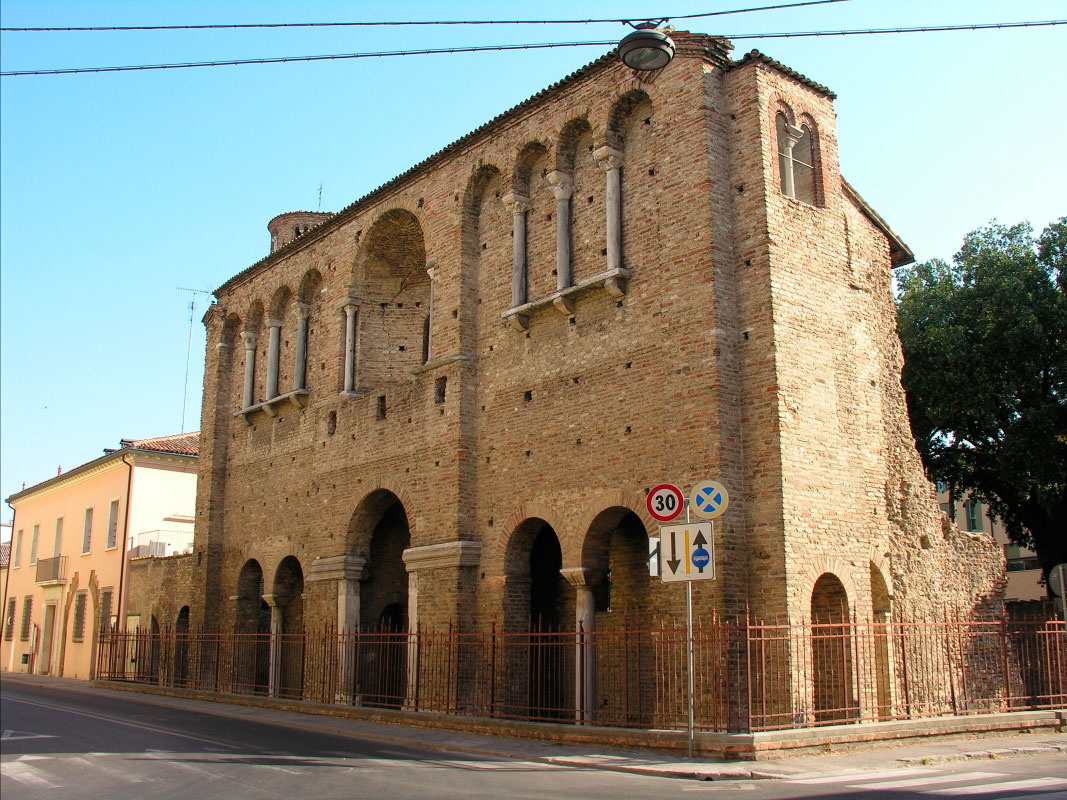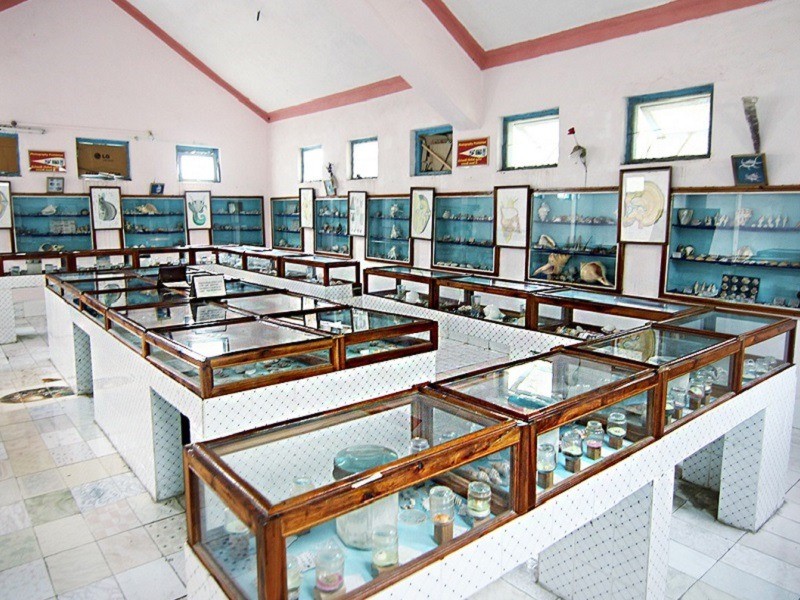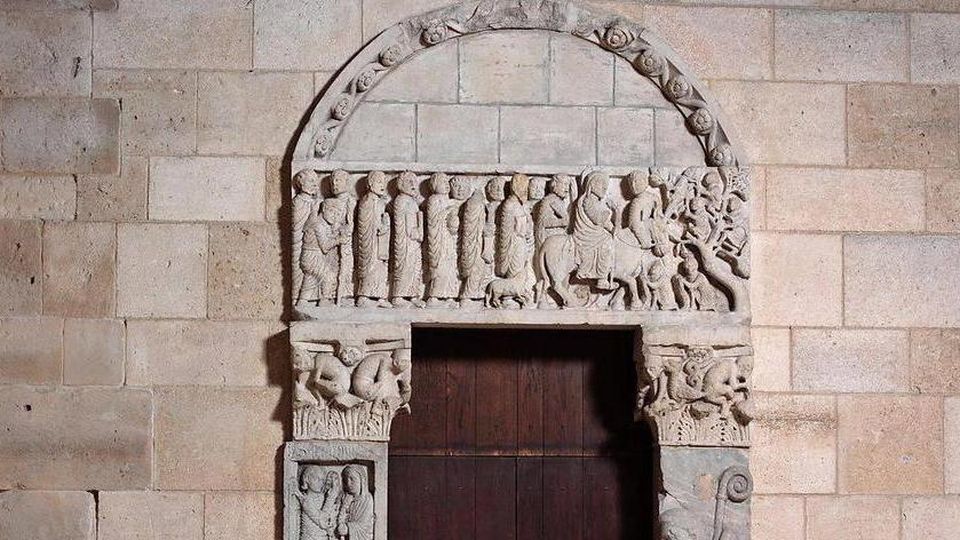The most beautiful place of the encounter between science and art is certainly the historic Pharmacy in the Incurabili, which is also the most admirable and best-preserved part of the ancient Hospital of the Realm. An unsurpassed Baroque-Rococo masterpiece, it is both an efficient drug laboratory and an intriguing place of representation for the scientific elite of the Neapolitan Enlightenment. The succession of rooms, counterspezieria-big room-laboratories, shows a rigorous control of space connected to the efficiency of a modern pharmacy together with a skillful harmony built by the color references from the riggiole to the majolica, from the styli to the gilded carvings. Domenico Antonio Vaccaro in 1729 executed the drawings for the new Fabbrica to be made for the enlargement of the hospital of this Holy House . The pharmacy’s elegant double piperno staircase, which faces the courtyard like that of a particular villa facing the garden (so argued Roberto Pane), envelops the bronze depicting Maria Lorenza Longo. Ramps lead up to the Loggia embellished with marble portals surmounted by devilish vases and masks symbolizing the dual nature of the drug, which, while on the one hand heals, can also become poison. Probably the interior layout of the pharmacy was taken care of between 1747 and 1751 by the engineer Bartolomeo Vecchione, who made use of fine Neapolitan craftsmen: Fucito for the carpentry, the styli, and the large counter; Di Fiore and Matarazzo for the carvings and gilding; Crescenzio Trinchese for the marbles and the urn of the Teriaca; and the riggiolari Massa for the majolica decorated by Lorenzo Salandra.
It is currently accessed through the counterspace, a room characterized by a large walnut-root counter and with a ceiling divided into two elliptical domes interspersed with a beam wrapped in stucco drapery decorated with putti. The walls are lined with apothecary stylets culminating in gilded pyramid pinnacles and containing ceramic vases decorated en camaieu bleu with fantastic landscapes and figures. The styli are embellished with two gilded wooden apothecary risers with 66 niches each containing glass jars and ampoules with still residues of pharmaceuticals (both powders and resins and liquids) inside. Many of the jars have a cartouche indicating the pharmaceutical preparation and do not always correspond to the specialties listed in the Incurabiline cookbook dating from the late eighteenth century. Indeed, there are phytobezoar-type products and products of mineral origin or from the animal world (mandibles and teeth of marine animals) that represent a clear reference to the older alchemical and esoteric tradition As in the back room, likely also included in the laboratory rooms with ovens, mortars and stills for preparing galenics and chemical preparations, there is a large marble urn, made by Crescenzio Trinchese and housed in a niche, containing the panacea for all evil, Teriaca or Triaca. This drug, reported as early as Galen’s antidotary as an antivenom developed by Mithridates King of Pontus, was extraordinarily popular in the Middle Ages and Renaissance; it contained opium, meat and viper skin among its many constituents. The demand was so great that governments made it subject to State Monopoly rules and wary of smuggling. The most famous preparations in antiquity were those of Venice and Naples; this was perhaps because both Cyprus, a tenement of the Serenissima, and Malta, which belonged to the Kingdom of Naples, allowed easy harvesting of the ophids. The product, in a public ritual, was prepared over several days by adding medicinal herbs as well. The ceremony implied balances between political power and funding of the protomedicate, controller of all the Apothecaries of the Realm, who had to buy at least a kilo a year. Teriaca was still present in the incurabilino cookbook and, validated as a preparation even by Domenico Cotugno as acqua teriacale , was still in wide use until the mid-19th century. These references to the Neapolitan magical-alchemical tradition, perhaps connected to a strong popular demand (the pharmacy also functioned for outsiders), do not undermine the great scientific value of the Farmacia designed as a modern example of apothecary research and training. In fact, the realization of the Pharmacy marks the watershed between Enlightenment medicine and the modern hospital, understood as a place of care and no longer simply a hospice.
The patron of the idea, Antonio Magiocco, jurist and governor of the Incurabili, towers from the top of the Great Hall in an intriguing pose, with a smile on his lips and his hand inviting (the work of Matteo Bottigliero) to admire the great hall of representation interdicted to commerce and the usual office of the apothecaries, as a reserved assembly hall. Splendid sliding doors close this treasure chest. A majolica floor, an authentic carpet of riggiole embellished with baskets of fruit and a large central cross, shows all the vividness of the colors of the Massa workshop to which the colors of the vases that came out of the same atelièr are a pendant. The formal fullness achieved by the repetitiveness of hundreds of closed vases is enriched by scenes from the Old Testament and moral allegories. The room is crowned by Bardellino’s canvas that decorates the ceiling and depicts Macaon Cures Wounded Menelaus (1750), a theme inspired by the wounds described by Homer in the Iliad. Di Fiore’s gilded carvings are noteworthy: the counterspezieria features a depiction traditionally interpreted as an allegory of the virginal womb; the great hall, on the other hand, is dominated by a dissected uterus, as if for a longitudinal Caesarean section.
In the temple of medicine of the Farmacia degli Incurabili, the use of the chemical drug marks the great achievement of medicine, which was almost always helpless before the phenomenology of the diseases that were also being investigated; with the drug, the physician could counteract diseases such as syphilis ( mercurial frictions and suffumigation). Products based on calomel, a mercurial preparation employed by Cyril against lue venerea, constituted, in a ‘preantibiotic era, a valuable antidote to the progression of the disease. Certainly mercurial and arsenical preparations along with opiates represent an essential part of the entire incurabilino pharmaceutical armamentarium.Those who read the large manuscript of the Rules of the Royal House of the Incurables are surprised by the attention paid to the pharmacy staff. The rigorous organization, subject to the control of the director, who also had training functions for the young apothecaries, held in high regard the different stages, from the fencing to the procurement of herbs, to the galenic preparation of the products, to their collection on the large countertop of the counterspice and delivery to the assisting staff, all linked to the name of the patient waiting in the aisle for the drug. Sciroppai, unctionaries, physicians,physicists and ceramists personally collected the products from the pharmacy. The ‘establishment of the pharmacy represented the strong managerial will already in the era of the Austrian Viceroyalty to invest in pharmaceutical research, considered the frontier of medical knowledge.
It was the drug that made the great turning point from fideistic and theurgical medicine, which relied only on the beautiful forms of art and prayer, to the modern hospital, capable of treating diseases with finally effective means of treatment.
Gennaro Rispoli
Director U.O. Gen. Surgery Ascalesi Hospital
Sara Oliviero
Art historian
